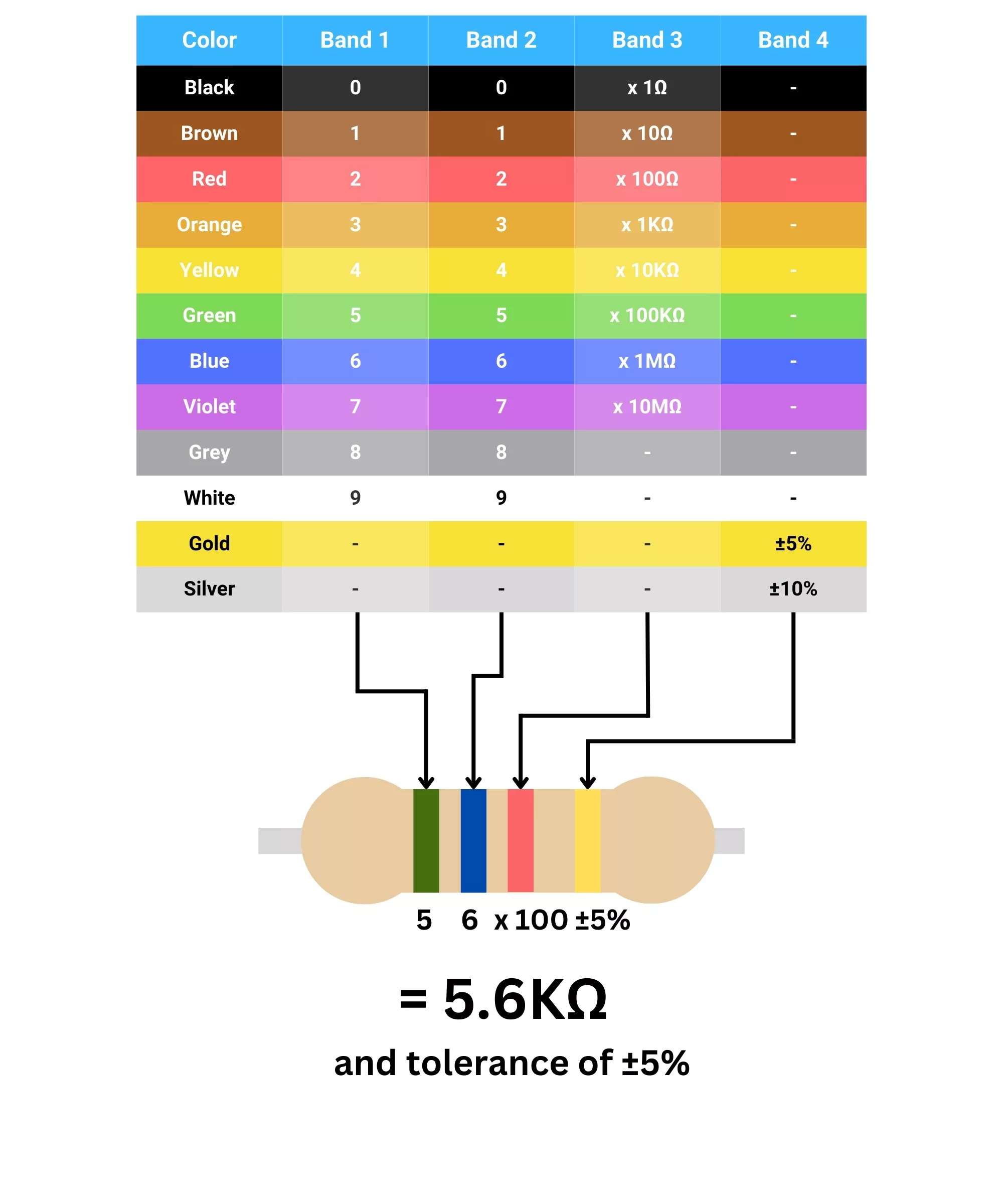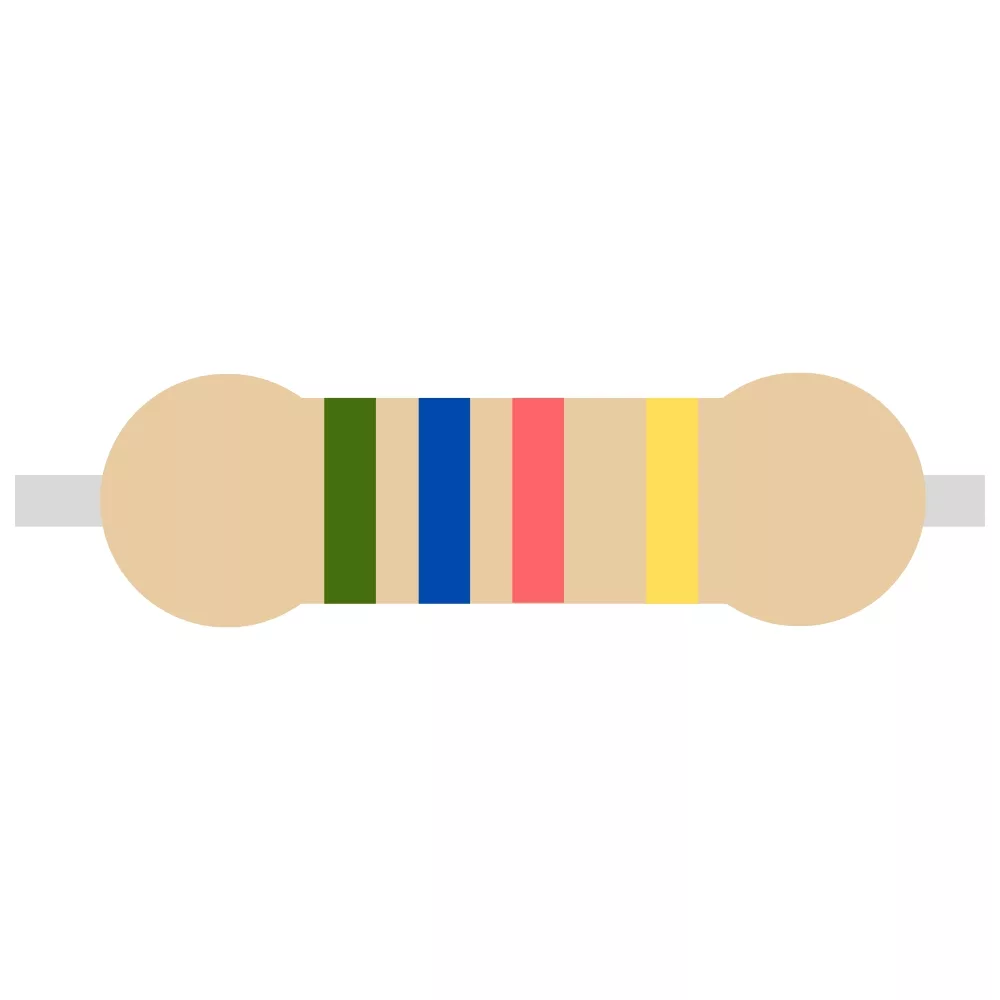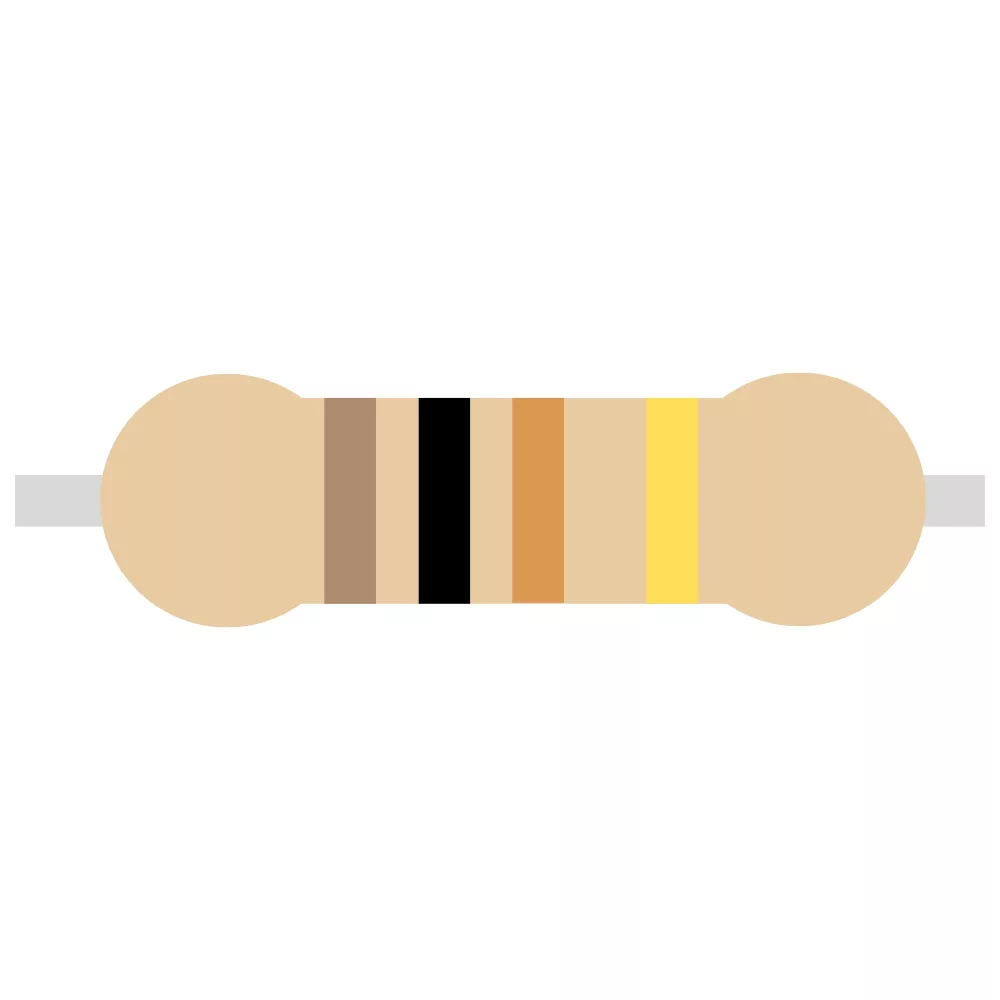

Determining the resistance value of a through-hole carbon-film or metal resistor is done by noting down the colour bands printed across the body, and then comparing those colour bands to a colour chart. The most common resistors (and those used by MitchElectronics), are carbon-film 4-band resistors. The first two colour bands of a 4-band resistor indicate the numeric value, while the third colour band indicates the multiplier. The fourth colour band indicates the tolerance of that resistor, and in most cases, this will be a gold strip indicating 5%.
Let’s look at a few examples to see how colour codes are decoded!

In this case, the first two colours are green and blue, meaning that the numeric value is 56. The third colour is red, meaning that the number needs to be multiplied by 100.
This results in an ohmic value of 5600, or 5.6k. Finally, the gold band indicates that this resistor has a tolerance of 5%, meaning that the actual resistance can vary between 5320 and 5880 ohms.

In this case, the first two colours are black and brown, meaning that the numeric value is 10. The third colour is orange, meaning that the number needs to be multiplied by 1000.
This results in an ohmic value of 10,000, or 10k. Finally, the gold band indicates that this resistor has a tolerance of 5%, meaning that the actual resistance can vary between 9500 and 10500.
